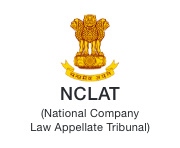
Report Of The Expert Committee On Company Law
| Background
|
|
1. The Companies Act 1956 was enacted on the recommendations of the Bhaba Committee set up in 1950 with the object to consolidate the existing corporate laws and to provide a new basis for corporate operation in independent India. With enactment of this legislation in 1956, the Companies Act 1913 was repealed. 2. The Companies Act, 1956, has since provided the legal framework for corporate entities in India. The need for streamlining this Act was felt from time to time as the corporate sector grew in pace with the Indian economy, with as many as 24 amendments taking place since 1956. Major amendments to the Actwere made through Companies (Amendment) Act, 1988 after considering the recommendations of the Sachar Committee, and thenagain in 1998, 2000 and finally in 2002 through the Companies (Second Amendment) Act 2002, consequent to the report of the EradiCommittee. |
| Approach of new Company Law
|
|
Nature and Coverage of the Companies Act |
| Classification and Registration of Companies
|
|
1. The Companies Act, 1956 broadly classifies the companies into private and public companies and provides for regulatory environment on the basis of such classification. However, with the growth of the economy and increase in the complexity of business operation, the forms of corporate organizations keep on changing. There is a need for the law to take into account the requirements of different kinds of companies that may exist and seek to provide common principles to which all kinds of companies may refer while devising their corporate governance structure. Rigid structures, unnecessary controls and regulations inhibit the risk taking initiatives of the entrepreneurs. |
| Management and Board Governance
|
|
1. The Board of Directors has to exercise strategic oversight over business operations while directly measuring and rewarding management’s performance. Simultaneously the Board has to ensure compliance with the legal framework, integrity of financial accounting and reporting systems and credibility in the eyes of the stakeholders through proper and timely disclosures. 2. Board’s responsibilities inherently demand the exercise of judgment. Therefore the Board necessarily has to be vested with a reasonable level of discretion. |
| Related Party Transactions
|
|
1. While directors have the authority to regulate the affairs of the company collectively as Board, their duties of good faith and fair dealings are owed by each director individually. Directors have the duty not to place themselves in a position when their fiduciary duties towards the company conflict with their personal interests. And in case it happens, directors have the duty to prefer interests of the company. Directors should not use company’s assets, opportunities or information for their own profit. 2. The Committee deliberated on whether transactions/contracts in which directors or their relatives are interested should be regulated through a “Government Approval-based regime” or through a “Shareholder Approval and Disclosure-based regime”. |
| Minority Interest
|
|
Balance to be struck between the rule of the majority and the rights of the minority |
| Investor Education and Protection
|
|
1. The Committee noted that the growth in the numbers of investors in India was encouraging. The trends revealed that in addition to FIIs and Institutional Investors, small investors were also gradually beginning to regain the confidence in the capital markets that had been shaken consequent to the stock market scams during the past decade. It is imperative for the healthy growth of the corporate sector that this confidence is maintained. |
| Access to Capital
|
|
1. Capital is essential for a business to conduct its operations and to grow. In a competitive and fast changing business environment, it is critical for business to raise capital of the right amount, in the right form, at the right time and at the right price. There is a need, therefore, for flexibility to manage capital dynamically and to enable reallocation of capital between businesses. In order to enable speedier access to capital and enable effective capital management, there is a need to enable use of a wide array of capital instruments in the backdrop of streamlined statutory and regulatory framework.
Read More
|
| Accounts and Audit
|
|
1. Proper and accurate compilation of financial information of a corporate and its disclosure, in a manner that is standardized and understood by stakeholders, is central to the credibility of the corporates and soundness of investment decisions by the investors. The preparation of financial information and its audit, therefore, needs to be regulated through law with stringent penalties for non-observance. It would however, not be feasible for the law to prescribe all the details guiding the treatment of this subject. This is a technical matter which needs to be gone into by experts keeping in view the requirements of proper disclosures of financial information in the interests of healthy corporate governance. |
| Mergers and Acquisitions
|
|
1. A business may grow over time as the utility of its products and services is recognized. It may also grow through an inorganic process, symbolized by an instantaneous expansion in work force, customers, infrastructure resources and thereby an overall increase in the revenues and profits of the entity. Mergers and acquisitions are manifestations of an inorganic growth process. |
| Investigation under the Companies Act
|
|
1. The Companies Act, 1956 provides for investigation of the affairs of companies under sections 235-250A of the Act. In addition, the Act provides for a separate process of inspection of Books of Accounts of companies under Section 209A. The Committee considered these provisions. |
| Offences and Penalities
|
|
1. The Companies Act, 1956 provides the legal basis for various corporate governance norms that are considered essential for proper corporate operation and protecting the rights of stakeholders. Violations of such norms are defined as offences with associated penalties. Essentially, law should be such that all subject entities should comply with it in their own interest. |
| Restructuring and Liquidation
|
|
1. Businesses need efficient and speedy procedures for exit as much as for start-up. World over, insolvency procedures help entrepreneurs close down unviable businesses and start up new ones. This ensures that the human and economic resources of a country are continuously rechannelised to efficient use thereby increasing the overall productivity of the economy. |











